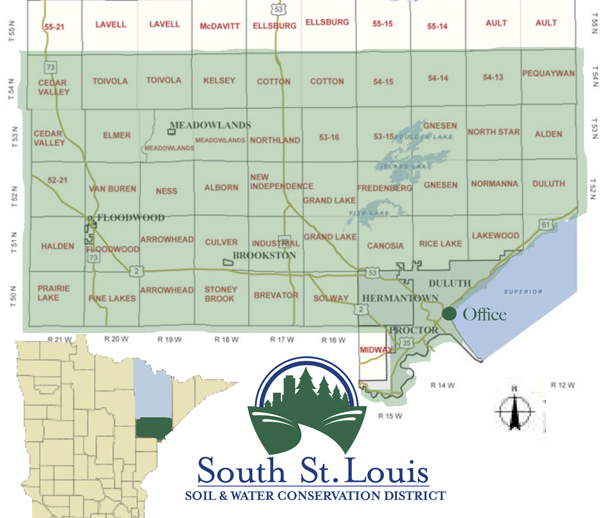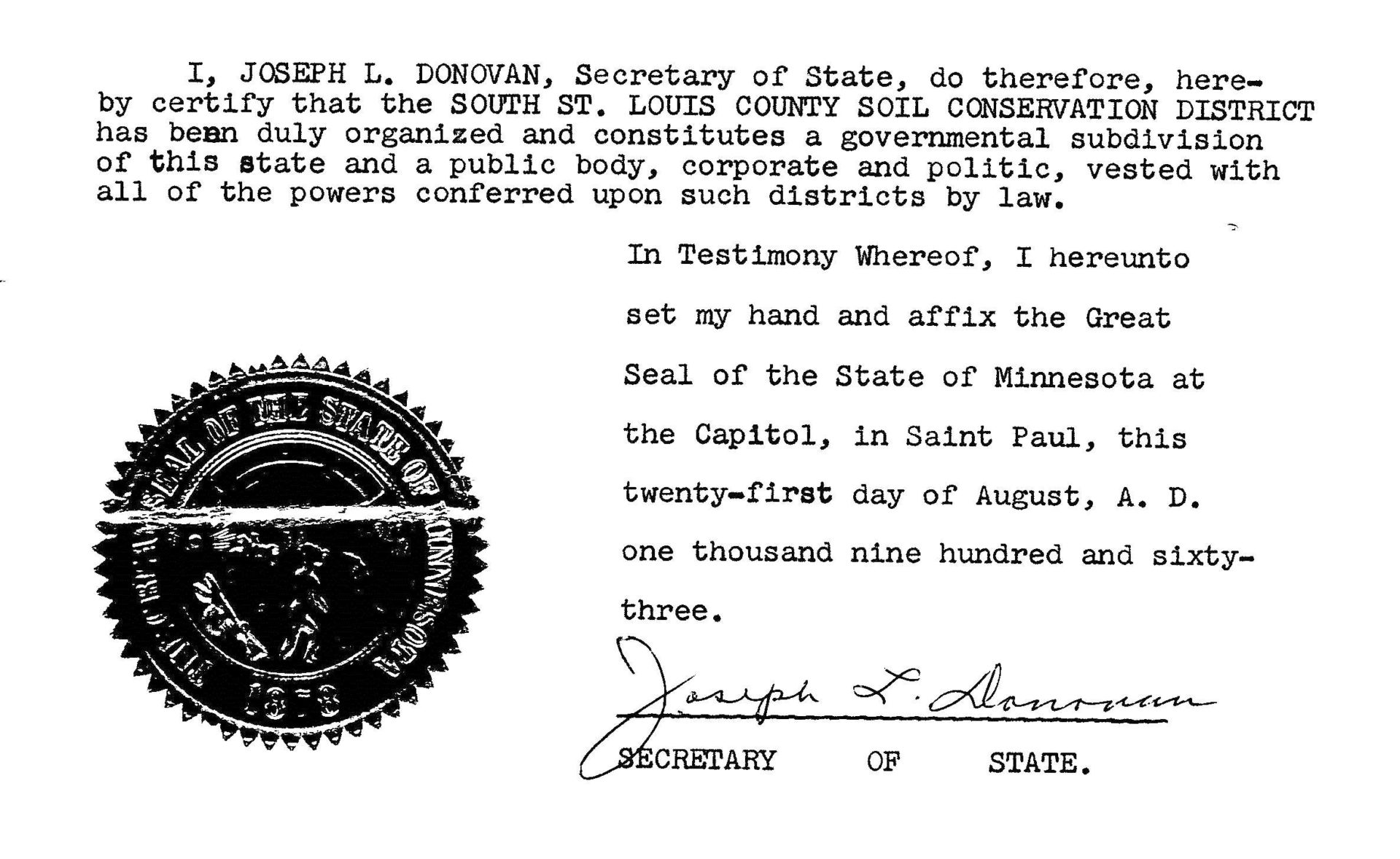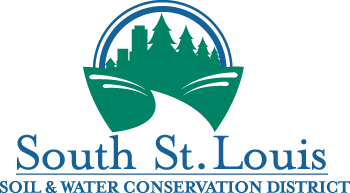State law governs the formation and operation of Soil and Water Conservation Districts. The Water Law of the state of Minnesota contains Soil and Water Conservation Law and Soil and Water Conservation Policy. This policy is Minnesota’s statement on soil and water conservation. A power granted to Minnesota SWCDs is to implement this policy.
The South St. Louis Soil and Water Conservation District is a governmental and political subdivision of the state of Minnesota. We are a local unit of government.The SWCD is a public body corporate and politic, and is governed by five elected supervisors. SWCD Elected Supervisors
Monthly meetings are open to the public. Find more information on upcoming and past meetings here: Board Meetings

South St. Louis SWCD includes all lands in St. Louis County south of and including Township 54. Our northern boundary is a line running from the north end of Cedar Valley Township to the north end of Pequaywan Township. This area is approximately the southern one-quarter of St. Louis County, and contains over one million acres.
South St. Louis SWCD Staff
R.C. Boheim
District Manager
RC.Boheim@southstlouisswcd.org
Julie Venhuizen
Administration & Communications Specialist
Julie.Venhuizen@southstlouisswcd.org
Tim Beaster
Conservation Specialist
Tim.Beaster@southstlouisswcd.org
Kyle Hildebrandt
Conservation Specialist
Kyle.Hildebrandt@southstlouisswcd.org
Andy Kasun
Conservation Specialist
Andy.Kasun@southstlouisswcd.org
Soil and Water Conservation Policy
“Improper land use practices have caused serious wind and water erosion of the land of this state, the runoff of polluting materials, increased costs to maintain agricultural productivity, increased energy costs and increased flood damage. Land occupiers have the responsibility to implement practices to correct these conditions and conserve the soil and water resources of the state. It is the policy of the state to encourage land occupiers to conserve soil and water resources through the implementation of practices that effectively reduce or prevent erosion, sedimentation, siltation and agriculturally related pollution in order to preserve natural resources, ensure continued soil productivity, control floods, prevent impairment of dams and reservoirs, assist in maintaining the navigability of rivers and harbors, preserve wildlife, protect the tax base, and protect public lands.”


